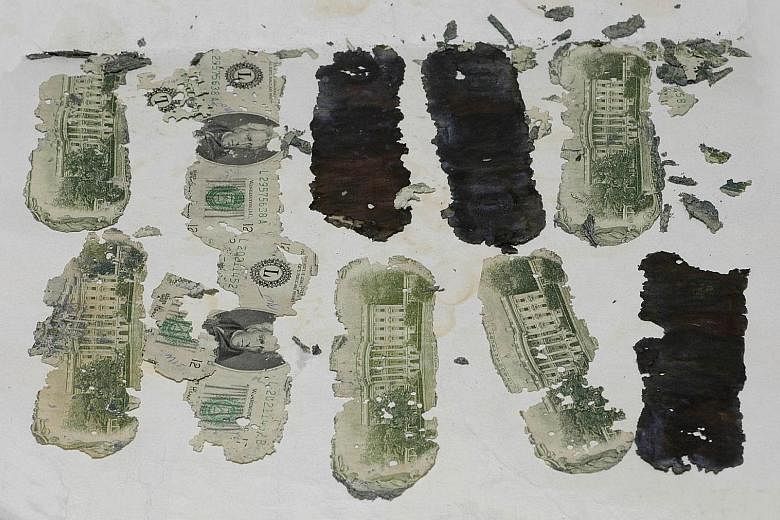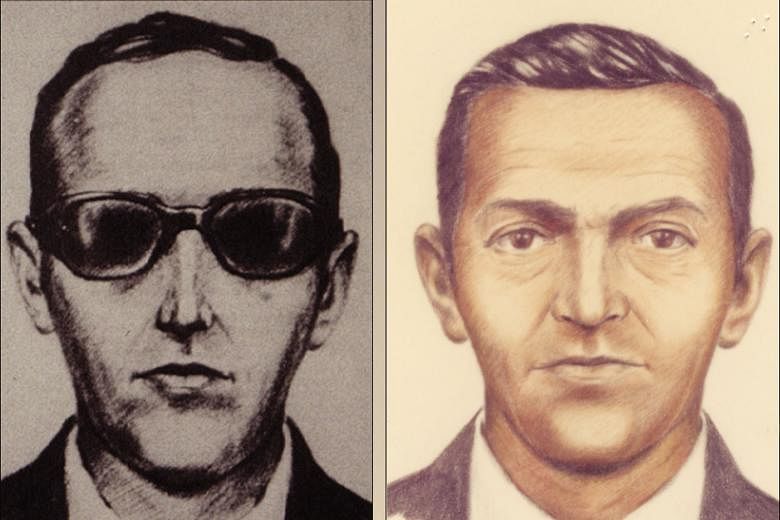WASHINGTON • Of all the skyjackings in the United States, only one remains unsolved.
The case has confounded FBI investigators for decades - its astonishing details, clues and alleged participants have become the stuff of American criminal lore.
The story has inspired songs, T-shirts and books, and the main character has at times bordered on folk hero status.
Now, after one of "the longest and most exhaustive" probes in its history, the Federal Bureau of Investigation is finally moving on from the search for the infamous skyjacker known as D.B. Cooper, according to a statement on Tuesday.
The riveting search - which Washington Post reporter Cynthia Gorney described as "Jesse James meets the Loch Ness monster" - is more or less over.
"During the course of the 45-year Norjak investigation, the FBI exhaustively reviewed all credible leads, coordinated between multiple field offices to conduct searches, collected all available evidence, and interviewed all identified witnesses," the statement says, referring to the "Northwest hijacking".
The case began on Nov 24, 1971 in Portland, Oregon, when a man who went by the name D.B. Cooper used cash to buy a one-way ticket on Northwest Orient Airlines' Flight 305, bound for Seattle in Washington state.
By the end of that night, Cooper would vanish into thin air 3km above dense forest land in Washington with US$200,000 in cash, appearing to pull off a heist so daring that he would eventually be considered the most infamous hijacker in US history.
The FBI describes Cooper as a "quiet man" in his mid-40s who wore a business suit with a black tie and white shirt. After ordering a bourbon and soda, he passed a note to a stewardess that explained he had a bomb in his briefcase.
"The stunned stewardess did as she was told," the FBI statement notes. "Opening a cheap attache case, Cooper showed her a glimpse of a mass of wires and red-coloured sticks and demanded that she write down what he told her. Soon, she was walking a new note to the captain of the plane that demanded four parachutes and US$200,000 in US$20 bills."
After landing in Seattle, Cooper allowed 36 passengers to leave the Boeing 727 in exchange for cash and several parachutes. He instructed the plane to take off again and head for Mexico City.
A little after 8pm, between Seattle and Reno, according to the FBI, Cooper launched himself from the back of the plane with his money in hand. He was never seen again.
"No experienced parachutist would have jumped in the pitch-black night, in the rain, with a (322km per hour) wind in his face, wearing loafers and a trench coat. It was simply too risky. He also missed that his reserve chute was only for training and had been sewn shut - something a skilled skydiver would have checked," an FBI Special Agent said in 2007.
The FBI has investigated more than 1,000 tips on what happened to Cooper since.
"The tips have conveyed plausible theories, descriptive information about individuals potentially matching the hijacker, and anecdotes to include accounts of sudden, unexplained wealth," the bureau said.
Nearly four decades and countless suspects later, not much has changed. Despite some tantalising clues discovered over the years - such as a rotting package containing US$5,800 in US$20 bills with serial numbers that matched the ransom money - many investigators believe Cooper never survived his plummet to the earth.
His parachute was not steerable and he would have landed in the wilderness wearing a suit and dress shoes in the winter time and at night.
WASHINGTON POST


